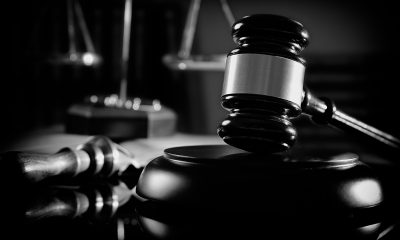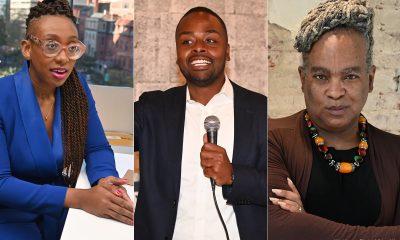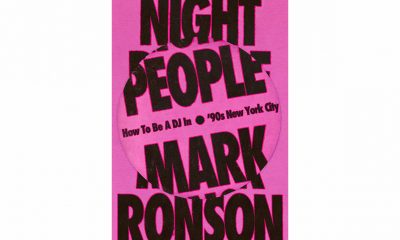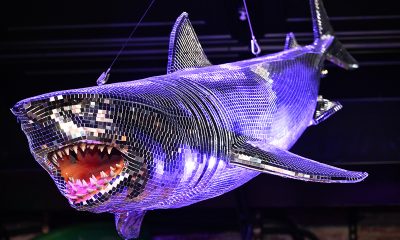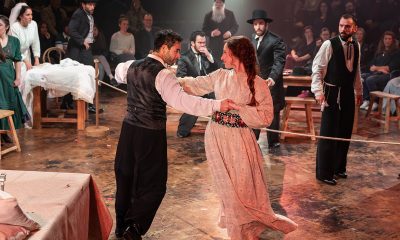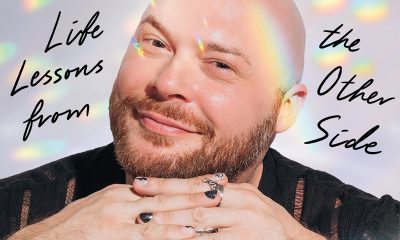Arts & Entertainment
Steps to Stonewall
Early ‘60s D.C. protests laid groundwork for riots, activists say
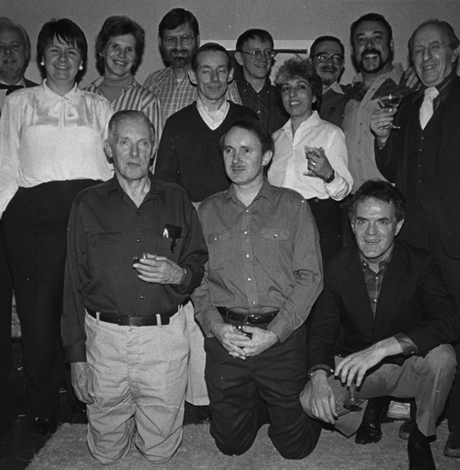
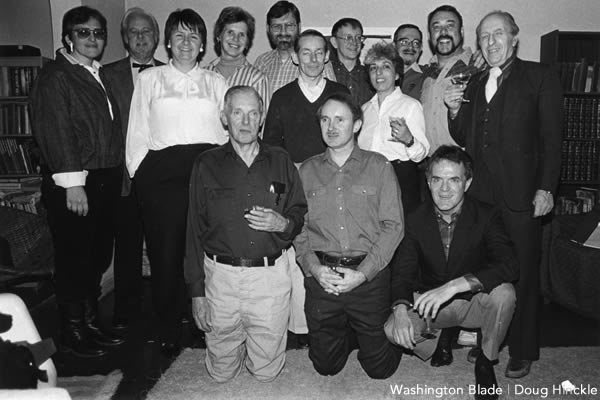
Editor’s note: This story is reprinted from the June 5, 2009 edition of the Blade.
The widely held notion that 1969’s Stonewall riots in New York’s Greenwich Village were the start of the modern gay rights movement is inaccurate local activists say as they were meeting and picketing years before.
“When people say as you so often hear, that the gay movement started with Stonewall, if I have a chance under the circumstances in which it’s said, I invariably correct them very insistently,” says Frank Kameny, 84, a legendary gay activist widely recognized as one of the great leaders of the homophile movement, as it was then known. “And point out that the movement was just sort of 20 years old already and there was a groundwork.”
Kameny and others who were involved in the early years agree, though, that Stonewall’s influence can’t be overstated, through its significance wasn’t immediately apparent.
Kameny, Lilli Vincenz, Paul Kuntzler, the late Barbara Gittings, the late Jack Nichols and others had been involved in East Coast gay activism for years. An April 1965 picket at the White House by the Kameny-and-Nichols-founded Mattachine Society of Washington was the first of its kind, but involved a small group dressed — at Kameny’s insistence — in shirts and ties for the men and dresses or skirts for the women.
“Things culturally were very, very different then,” Kameny says, describing the scene of an early picket at the Civil Service Commission to protect the inability of gays to get security clearances. “In 1965, men’s shirts were white. Period. There were no other kinds. Dress was very conservative. It changed over the next half decade, changed very significantly … but in terms of those days, if we’re gonna picket to be employed, we have to look employable by their standards.”
A handful of gay groups existed on the East Coast and met regularly as the East Coast Homophile Organizations (ECHO). Those involved say it was a different world.
“Most gay people at the time were not interested in any kind of civil rights activity,” Vincenz, 71, says. “So we were seen as kind of Don Quixotes chasing windmills. I felt they could at least give us some money, but they didn’t do that either. They were worried about their careers and they thought it was a lost cause. They couldn’t imagine it. So I was seen as a crusader and so we were a small group.”
Kameny says it soon became obvious from ECHO gatherings that D.C.’s Mattachine Society was a trendsetter taking on the Civil Service Commission, the qualification of homosexuality as an illness by the American Psychiatric Association, security clearances, the military gay ban and more.
“All those things we were doing, nobody else was doing to any meaningful extent anywhere,” Kameny says. “We had ECHO meetings in October of each year in ’63, ’64 and ’65 and monthly meetings here in Washington, Philadelphia and New York over that period and the Washington Mattachine was doing things and reporting to everyone else what we were doing. Philadelphia had two women … the New York Mattachine had monthly meetings but they were just meetings, they weren’t accomplishing anything particularly. The things that were being done were being done by us here.”
Kuntzler met Kameny one night at the Chicken Hut, a gay D.C. bar, in late February of ’62 and found a kindred spirit. He remembers the sign he made to carry in the first White House protest.
“Jack (Nichols) saw my poster and wanted it, so I let him carry it,” Kuntzler, 67, says with a chuckle. “He ended up in the front of a photo carrying my sign.”
“That was the first time we had any visibility,” Vincenz, who’ll be honored as a Pride “superhero” with Kameny at this year’s Capital Pride parade, says. “Confidential magazine picked us up and put our pictures everywhere. … We’d never had any visibility before that actually.”
One of ECHO’s signature yearly events was an Independence Day protest each year at Independence Hall in Philadelphia. The one held in 1969, though, which turned out to be ECHO’s last, was markedly different. Stonewall had happened less than a week before and changed things forever.
None of the Mattachine activists were involved in the Stonewall riots. Because it was a spontaneous event that quickly gathered steam during a then par-for-the-course police raid on the gay bar, the only people involved were those who happened to be at the Stonewall Inn, a seedy, Mafia-owned dive that attracted drag queens and homeless gay youth, that night. But they heard about it almost instantly.
“We were all in contact through ECHO, so we heard immediately of what had happened,” Vincenz says. “This was a big event that somebody had, so many people fought back against the police.”
Kameny doesn’t remember exactly whom he heard the news from first but says he was “elated.”
In Philadelphia just days later at the ECHO protest, it was clear the formal Mattachine members had some new allies.
“It looked very different,” Vincenz says. “People didn’t care about any dress rules. The Stonewall crowd came over and there we had, we weren’t supposed to have beards and sandals but now we had beards and sandals. I remember two women, black, white, holding a baby and holding hands. It was just new. And there was some of kind of disgruntlement by some of the old guard. This was a new influx of grassroots activists.”
While the Independence Day picket seemed slightly different, it became apparent that things were much different on June 28, 1970 for the first Christopher Street Gay Liberation Day March, a one-year commemoration of Stonewall that morphed into the annual Pride parades.
Kameny, who attended, was dumbfounded by the turnout.
“I remember … seeing this vast horde of people and I was absolutely speechless,” he says. “Flowing in like a river into the Sheep Meadow in Central Park. If nothing else, there it was in front of one’s eyes. It would have been impossible in terms of anything movement-wise prior to that. We had clearly overstepped a line. We had transitioned.”
Cliff Witt, a longtime local D.C. gay activist, accompanied Vincenz to the parade as a camera assistant for the film she made called “Gay and Proud.”
“I had heard of Stonewall before, but I don’t remember how I first heard,” he says. “I had many trepidations. You could not be gay in those days. Lilli was out through her Mattachine work. I agreed that I would be like the press, running along side, but not part of it.”
Back home in Washington, huge changes were underway. The Mattachine Society was winding down, eclipsed somewhat by the newly formed Gay Activist Alliance (GAA, which became the Gay & Lesbian Activist Alliance in the ‘80s), a spin-off of a similar New York group.
Stonewall’s significance is almost universally recognized but it’s not the whole story players active then say.
Kuntzler says Stonewall-type events were also brewing in Washington around that time. He recalls a May 1969 night at D.C.’s Plus One, a gay bar on 8th Street, S.E. It didn’t turn violent and wasn’t as dramatic as Stonewall, but the long line of gay men waiting to get in that Thursday night didn’t turn and run when a mammoth flock of police cars arrived.
“They hardly paid any attention (to the cops),” Kuntzler says. “It just didn’t work, so the cops went away. This was a liberation in a way, too. It was indicative of a profound psychological shift that had started.”
“It was like Stonewall started the mainstream gays,” Witt says. “It sort of started the organization of the gay liberation movement as we came to know it. … It became more militant and demanding and in your face. We weren’t polite any longer.”
Kameny puts it succinctly: “I feel we created a mindset without which Stonewall would not have occurred at all.”
Theater
Out actor talks lead role in ‘Fiddler on the Roof’
Signature Theatre production runs through Jan. 25
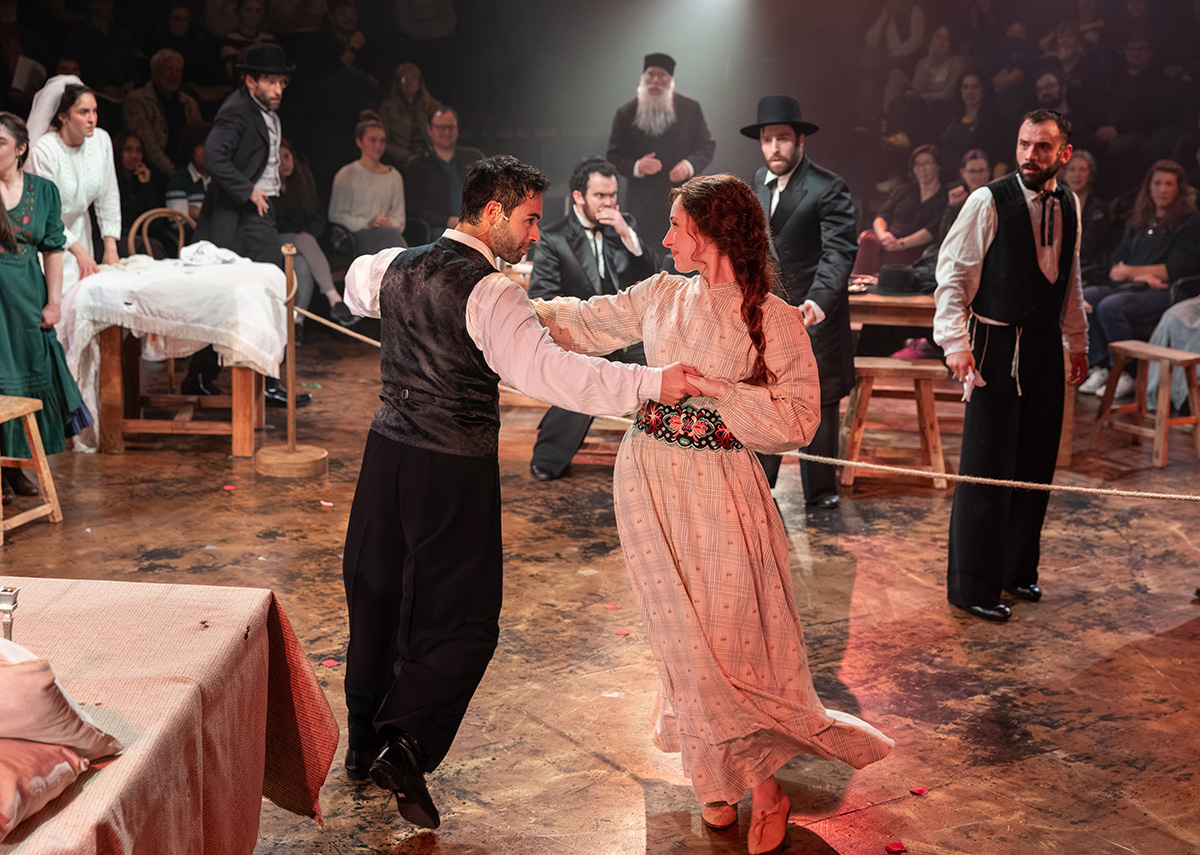
‘Fiddler on the Roof’
Through Jan. 25
Signature Theatre
4200 Campbell Ave.
Arlington, Va.
Tickets start at $47
Sigtheatre.org
Out actor Ariel Neydavoud is deep into a three-month run playing revolutionary student Perchick in the beloved 1964 musical “Fiddler on the Roof” at Signature Theatre in Arlington. And like his previous gigs, it’s been a learning experience.
This time, he’s gleaning knowledge from celebrated gay actor Douglas Sills who’s starring as the show’s central character Tevya, a poor Jewish milkman in the fictional village of Anatevka in tsarist Russia circa 1905.
In addition to anti-Semitism and expulsion, Tevya is struggling with waning traditions in a changing world where his daughters dare suggest marrying for love. Daughter Hodel (Lily Burka) falls for Perchick, an outsider who comes to town brandishing new ideas.
In addition to its compelling and humor filled storyline, “Fiddler” boasts iconic numbers like “If I Were a Rich Man,” “Tradition,” “Matchmaker, Matchmaker,” and “Sunrise, Sunset.”
Neydavoud, born and raised as an only child in the West Los Angeles neighborhood lightheartedly referred to as Tehrangeles (due to the large Iranian-American population), has always been passionate about performing. “It’s like I came out of the womb tap dancing,” he says. Fortunately, his mother, an accomplished pianist and composer, served as built-in accompanist.
He began acting and singing at kid camps and a private Jewish middle school alongside classmate Ben Platt. In his teens, Neydavoud spent three glorious weeks at Stagedoor Manor, a well-known theater camp in Upstate New York, where he solidified his desire to pursue theater as a profession, and started to feel comfortable with being queer.
Following high school, he studied at AMDA (American Musical and Dramatic Academy) and soon after morphed from theater student to professional actor.
WASHINGTON BLADE: Your entry into showbiz seems to have been a smooth one.
ARIEL NEYDAVOUD: I’m happy to hear it seems that way. I’d rarely describe anything about this profession as smooth; nonetheless, what I love about this work is that it gives opportunities to have so many new experiences: new shows, new parts, and new communities who come together in a moment’s notice purely for the sake of creating art.
BLADE: Tell us about Perchick.
NEYDAVOUD: He comes to Anatevka and challenges their ideals and way of life. That’s something I can relate to.
I’m Jewish on both sides, but I’m also queer, first generation American, [his mother and father are from Germany and Iran, respectively], and a person of color. I never feel like I belong to a single community. That’s what has emboldened my inner activist to speak up and challenge ideas that I don’t necessarily buy into.
BLADE: You sing beautifully. Perchick’s song is “Now I have Everything,” an Act II melody about finding love. Was it an instant fit for you?
NEYDAVOUD: Not instantly.I’m traditionally a first tenor. Perchick is baritone range, a little outside of my comfort zone. After being cast, I asked our director Joe Calarco if he would be comfortable raising the key, something they did with the recent Broadway revival. He was firm about not doing that.
As an artist I see challenges as opportunities to grow, so it’s been really good exploring my lower register.
BLADE: Audiences have commented on an intimacy surrounding this production.
TK: It’s performed in the round with a dining table at its center. It could be a sabbath or seder table, however you interpret it, but I find it a brilliant way to illustrate community and tradition.
It feels like the audience is invited to the table and join the residents of Anatevka. The show’s moments of joy like the betrothal song “To Life (L’Chaim)” are intensified, and conversely the pogrom scenes are made more difficult. It feels like we’re sharing space.
BLADE: Do your encompassing identities broaden casting possibilities for you?
NEYDAVOUD: Marketing yourself as ethnically ambiguous can be a helpful tool. After “Hamilton” and the pandemic there was more of a shift toward authenticity. I try to steer toward playing Middle Eastern, Southwest Asian, Jewish, and mixed-race characters without being too prescriptive.
BLADE: Tell us your dream roles?
NEYDAVOUD: I’d love to play the Emcee in Cabaret [often portrayed as a gender-fluid, queer-coded, or non-binary figure]. And I’d like to direct a production of “Godspell” with a fully Middle Eastern cast. I think portraying Jesus and disciples in Middle Eastern bodies as Bohemian idealists living under an oppressive regime could be especially impactful.
BLADE: Can today’s queer audiences relate to life on the shtetl?
NEYDAVOUD: As a piece, “Fiddler” is timeless. Beyond the magical score, it hits home with just about anyone who’s ever felt othered. There are relevant themes of displacement and persecution, and maintaining cultural identity in the wake of turbulence, all ideas that tend to resonate with queer people.
Books
This gay author sees dead people
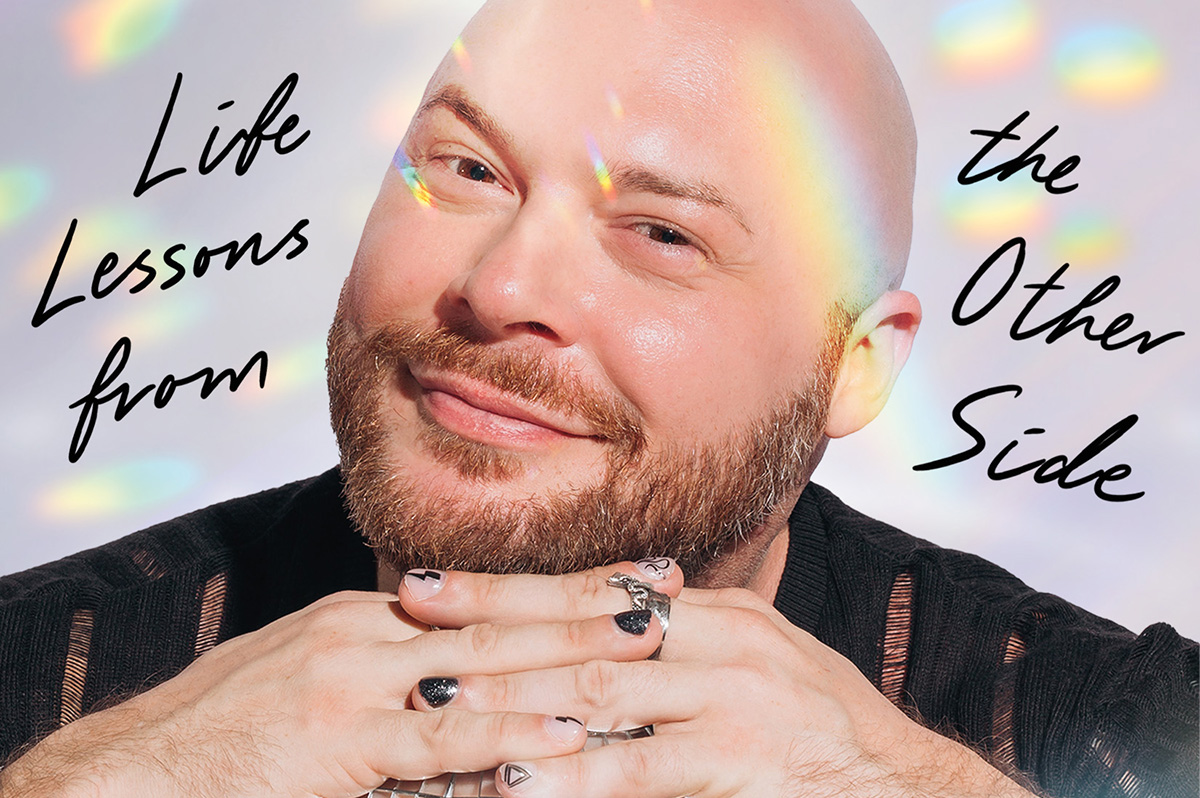
‘Are You There Spirit? It’s Me, Travis’
By Travis Holp
c.2025, Spiegel and Grau
$28/240 pages
Your dad sent you a penny the other day, minted in his birth year.
They say pennies from heaven are a sign of some sort, and that makes sense: You’ve been thinking about him a lot lately. Some might scoff, but the idea that a lost loved one is trying to tell you he’s OK is comforting. So read the new book, “Are You There, Spirit? It’s Me, Travis” by Travis Holp, and keep your eyes open.

Ever since he was a young boy growing up just outside Dayton, Ohio, Travis Holp wanted to be a writer. He also wanted to say that he was gay but his conservative parents believed his gayness was some sort of phase. That, and bullying made him hide who he was.
He also had to hide his nascent ability to communicate with people who had died, through an entity he calls “Spirit.” Eventually, though it left him with psychological scars and a drinking problem he’s since overcome, Holp was finally able to talk about his gayness and reveal his otherworldly ability.
Getting some people to believe that he speaks to the dead is still a tall order. Spirit helps naysayers, as well as Holp himself.
Spirit, he says, isn’t a person or an essence; Spirit is love. Spirit is a conduit of healing and energy, speaking through Holp in symbolic messages, feelings, and through synchronistic events. For example, Holp says coincidences are not coincidental; they’re ways for loved ones to convey messages of healing and energy.
To tap into your own healing Spirit, Holp says to trust yourself when you think you’ve received a healing message. Ignore your ego, but listen to your inner voice. Remember that Spirit won’t work on any fixed timeline, and its only purpose is to exist.
And keep in mind that “anything is possible because you are an unlimited being.”
You’re going to want very much to like “Are You There, Spirit? It’s Me, Travis.” The cover photo of author Travis Holp will make you smile. Alas, what you’ll find in here is hard to read, not due to content but for lack of focus.
What’s inside this book is scattered and repetitious. Love, energy, healing, faith, and fear are words that are used often – so often, in fact, that many pages feel like they’ve been recycled, or like you’ve entered a time warp that moves you backward, page-wise. Yes, there are uplifting accounts of readings that Holp has done with clients here, and they’re exciting but there are too few of them. When you find them, you’ll love them. They may make you cry. They’re exactly what you need, if you grieve. Just not enough.
This isn’t a terrible book, but its audience might be narrow. It absolutely needs more stories, less sentiment; more tales, less transcendence and if that’s your aim, go elsewhere. But if your soul cries for comfort after loss, “Are You There, Spirit? It’s Me, Travis” might still make sense.
The Blade may receive commissions from qualifying purchases made via this post.
a&e features
Your guide to D.C.’s queer New Year’s Eve parties
Ring in 2026 with drag, leather, Champagne, and more
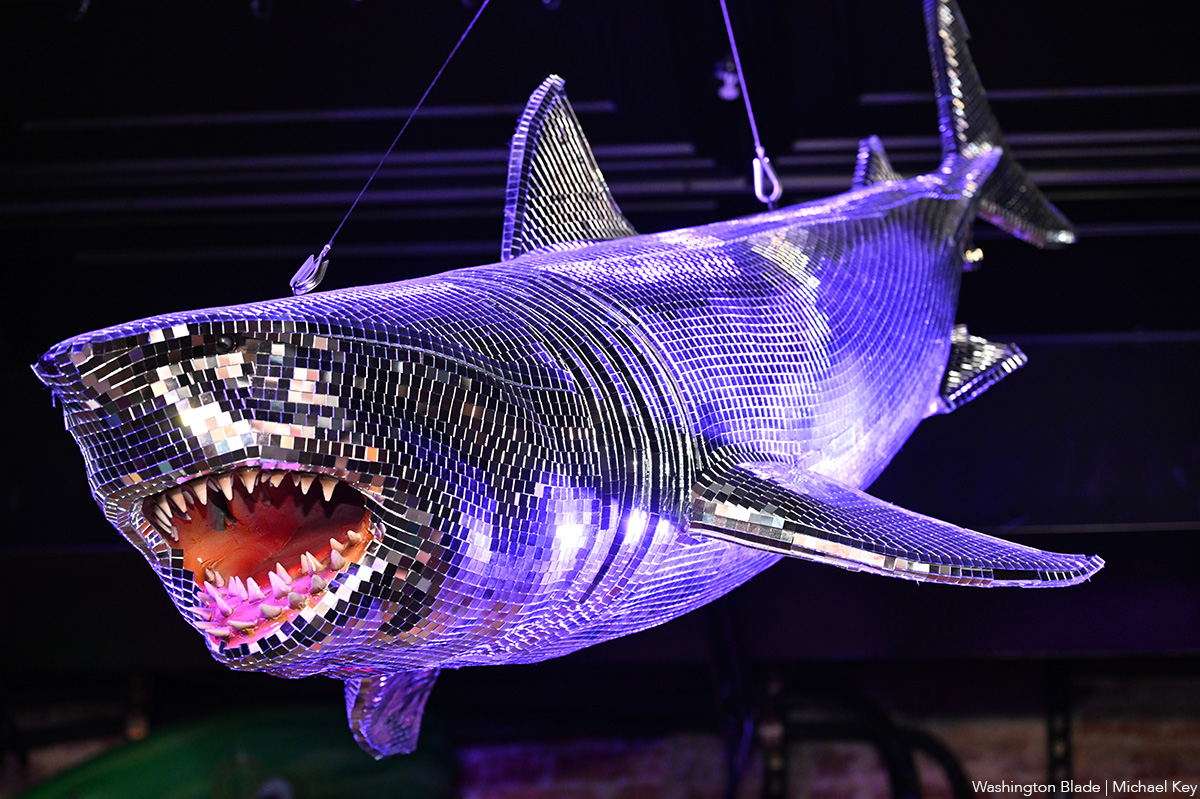
With Christmas in the rear view mirror, we can turn our attention to ringing in a much-anticipated New Year with a slew of local LGBTQ parties. Here’s what’s on tap.
Pitchers
This spacious Adams Morgan bar is hosting the “Pitchers’ Perfect New Year’s Eve.” There will be a midnight Champagne toast, the ball drop on the big screens, and no cover, all night long. The bar doesn’t close until 4 a.m., and the kitchen will be open late (though not until close). All five floors will be open for the party, and party favors are promised.
Trade
D.C.’s hottest bar/club combo is leaning into the Shark motif with its NYE party, “Feeding Frenzy.” The party is a “glitterati-infused Naughty-cal New Year’s Even in the Shark Tank, where the boats are churning and the sharks are circling.” Trade also boasts no cover charge, with doors opening at 5 p.m. and the aforementioned Shark Tank opening at 9 p.m.. Four DJs will be spread across the two spaces; midnight hostess is played by Vagenesis and the two sea sirens sensuously calling are Anathema and Justin Williams.
Number Nine
While Trade will have two DJs as part of one party, Number Nine will host two separate parties, one on each floor. The first floor is classic Number Nine, a more casual-style event with the countdown on TVs and a Champagne midnight toast. There will be no cover and doors open at 5 p.m. Upstairs will be hosted by Capital Sapphics for its second annual NYE gathering. Tickets (about $50) include a midnight Champagne toast, curated drink menu, sapphic DJ set by Rijak, and tarot readings by Yooji.
Crush
Crush will kick off NYE with a free drag bingo at 8 p.m. for the early birds. Post-bingo, there will be a cover for the rest of the evening, featuring two DJs. The cover ($20 limited pre-sale that includes line skip until 11 p.m.; $25 at the door after 9 p.m.) includes one free N/A or Crush, a Champagne toast, and party favors (“the legal kind”). More details on Eventbrite.
Bunker
This subterranean lair is hosting a NYE party entitled “Frosted & Fur: Aspen After Dark New Year’s Eve Celebration.” Arriety from Rupaul Season 15 is set to host, with International DJ Alex Lo. Doors open at 9 p.m. and close at 3 p.m.; there is a midnight Champagne toast. Cover is $25, plus an optional $99 all-you-can-drink package.
District Eagle
This leather-focused bar is hosting “Bulge” for its NYE party. Each District Eagle floor will have its own music and vibe. Doors run from 7 p.m.-3 a.m. and cover is $15. There will be a Champagne toast at midnight, as well as drink specials during the event.
Kiki, Shakiki
Kiki and its new sister bar program Shakiki (in the old Shakers space) will have the same type of party on New Year’s Eve. Both bars open their doors at 5 p.m. and stay open until closing time. Both will offer a Champagne toast at midnight. At Kiki, DJ Vodkatrina will play; at Shakiki, it’ll be DJ Alex Love. Kiki keeps the party going on New Year’s Day, opening at 2 p.m., to celebrate Kiki’s fourth anniversary. There will be a drag show at 6 p.m. and an early 2000s dance party 4-8 p.m.
Spark
This bar and its new menu of alcoholic and twin N/A drinks will host a NYE party with music by DJ Emerald Fox. Given this menu, there will be a complimentary toast at midnight, guests can choose either sparkling wine with or without alcohol. No cover, but Spark is also offering optional wristbands at the door for $35 open bar 11 p.m.-1 a.m. (mid-shelf liquor & all NA drinks).

